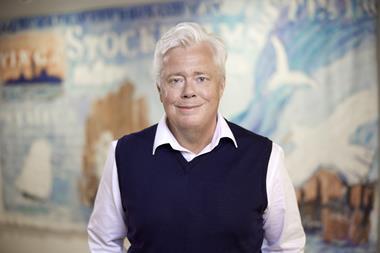That the Wellcome Trust’s £550m bond issue - the first by a European charity - should have been twice oversubscribed is hardly surprising. Before the July launch, Wellcome, the UK’s largest charity and the world’s second largest medical research non-profit organisation after Bill Gates’s, had already reaped two AAA ratings from Moody’s and Standard & Poor’s based on its liability-free assets of £13bn.
But the bond issue was arguably also exceptional. Wellcome’s debt coverage reflects that of similar-sized grant-making charitable bond issuers in the US; in Europe’s voluntary sector, it is almost unheard of.
Yet there was considerable investor interest in what is - in Europe at least - an innovation. According to the trust, interest in the 30-year bond came from “a broad range” of institutional investors. “The market appetite is there”, says Wayne Hiley of Barclays Capital, one of the bookmakers for the bond issue.
Hiley argues that there is a “natural demand” or a product offering a higher spread than government bonds but lower than that the spreads offered by the relatively small number of AAA-rated corporate bonds. “Some accounts are willing to buy at these levels - at the high end of expectations,” he says.
Yet those expectations were based on a hefty amount of guesswork. “It’s clear that investors were looking at it as quasi-government risk,” says John Mayne, co-managing director of JPMorganCazenove, another of the bookmakers. “But the challenge was the relative value discussion. That’s the thing about its uniqueness: there was nothing else to compare it to.”
What the bond has demonstrated is proof of concept. But will it have imitators? In the voluntary sector, probably not. Few have the scale, the assets or - at least to the naked eye - the financial nous.
The UK’s largest charitable trust, by contrast, manages a diversified £12.3bn (€18bn investment portfolio that has returned above 9% annually over the past 10 years. Around 4% of its net investment, around £450m, gets distributed annually in grants to independent medical research teams. Wellcome says it will use the proceeds of the bond to fund more research.
For the trust, the bond idea took nerve, innovation and a manager brought in from Goldman Sachs. “In-house experience and the confidence of a management team led by [former Goldman Sachs Asset Management managing director] Danny Truell helped,” says Paul Palmer, professor of voluntary sector management at Cass Business School.
Expertise apart, unlike most charities, many pension funds have the size and scale (in terms of assets) to make a bond issue a credible proposition. But they also have the liabilities to make it risible. Effectively, what Wellcome did was to use its financial clout to borrow cheaply, but without the debt coverage that drove Wellcome’s AAA rating, there would be little to make pension funds bond-worthy.
“It’s tough for pension funds to issue bonds independently of the companies with which they’re associated,” says Mayne. “Nor is it clear what the advantage would be. They already have liabilities on the one side, assets on the other. Wellcome had £13bn in assets and no liabilities.”
The symbolic value of Europe’s first voluntary sector bond is to have created a new asset sub-category for European investors. The possibility now is that it will be a one-off - a function of the peculiar structure of a super-scale charity on the model of the US Rockefeller Foundation. “Does this create a new category, a new kind of asset class?” says Mayne. “The answer has to be yes. But that doesn’t mean there’ll be many more issuers like Wellcome Trust.”
Even if it doesn’t come from a pension fund, Wellcome’s is unlikely to be the last bond issued from outside the state or private sector.
Palmer speculates that, having done it once successfully, the trust could issue further bonds. Even if it doesn’t, a consortium of smaller organisations - presumably charities - might be able to achieve the necessary credit rating. “It would be interesting if they did,” he says. There is mileage in the idea of new categories of bond issuers. Rather than charities and pension funds, Hiley argues, Wellcome should have spurred investment trusts to issue their own bonds.












No comments yet